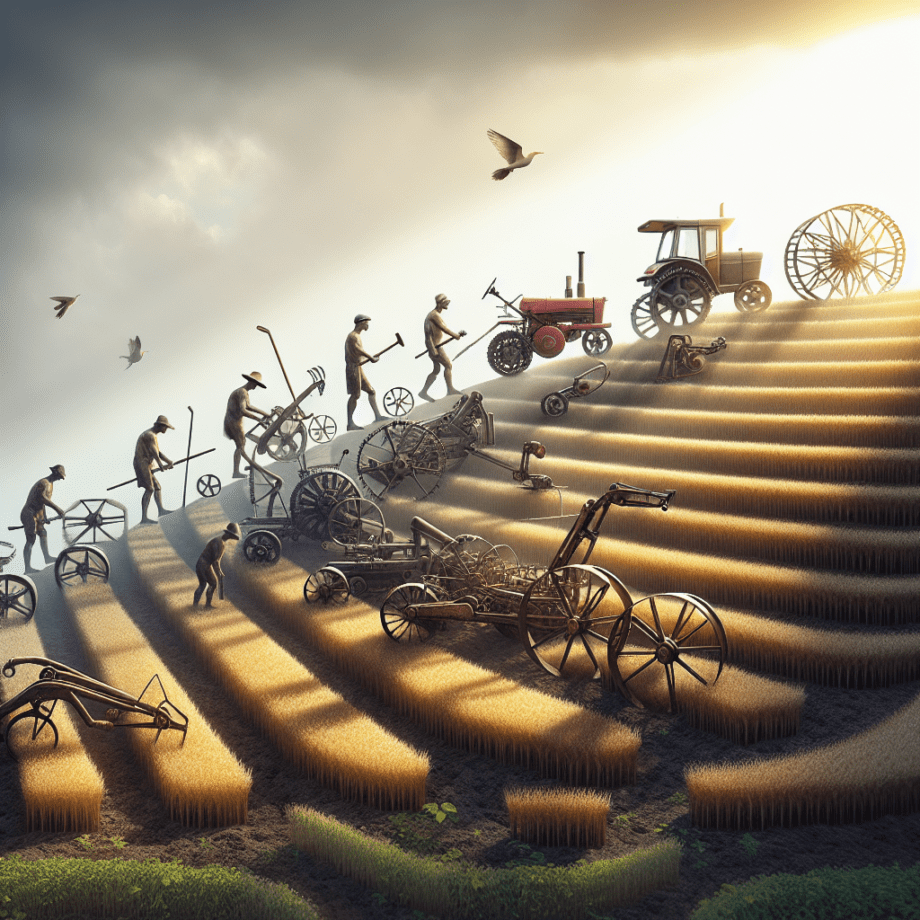The evolution of planting machinery has been a fascinating journey, transforming from rudimentary hand tools to sophisticated modern equipment. This article delves into the history, advancements, and future prospects of planting machinery, highlighting the significant milestones that have shaped agricultural practices over the centuries.
Historical Development of Planting Machinery
The history of planting machinery dates back to ancient civilizations, where the earliest farmers relied on simple hand tools to sow seeds. These tools, often made from wood or bone, were rudimentary but effective for small-scale farming. The primary tools included digging sticks, hoes, and seed drills, which required significant manual labor and time.
Early Innovations
As agricultural practices evolved, so did the tools. The introduction of the plow around 3000 BCE marked a significant advancement. Initially pulled by humans, the plow was later adapted for animal traction, increasing efficiency and allowing for the cultivation of larger areas. The seed drill, invented by Jethro Tull in the early 18th century, was another groundbreaking innovation. This device allowed for the precise placement of seeds at the correct depth and spacing, significantly improving crop yields.
Industrial Revolution and Mechanization
The Industrial Revolution in the 18th and 19th centuries brought about a wave of mechanization in agriculture. Steam-powered machinery, such as the steam plow and steam tractor, began to replace animal labor. These machines were more powerful and efficient, enabling farmers to cultivate larger fields with less effort. The development of the mechanical planter in the mid-19th century further revolutionized planting practices. These planters could plant multiple rows of seeds simultaneously, drastically reducing the time and labor required for sowing.
Modern Planting Machinery
Today, planting machinery has reached unprecedented levels of sophistication and efficiency. Modern equipment is designed to maximize productivity, minimize labor, and ensure optimal growing conditions for crops. The integration of advanced technologies, such as GPS, automation, and data analytics, has transformed planting machinery into highly precise and intelligent systems.
Precision Agriculture
Precision agriculture is a key trend in modern planting machinery. This approach uses GPS technology, sensors, and data analytics to optimize planting processes. GPS-guided planters ensure that seeds are sown with pinpoint accuracy, reducing waste and improving crop uniformity. Sensors monitor soil conditions, moisture levels, and nutrient content, allowing for real-time adjustments to planting strategies. Data analytics provide insights into crop performance, enabling farmers to make informed decisions and improve yields.
Automation and Robotics
Automation and robotics are also playing a significant role in the evolution of planting machinery. Autonomous tractors and planters can operate without human intervention, performing tasks with high precision and efficiency. These machines are equipped with advanced sensors and AI algorithms that enable them to navigate fields, avoid obstacles, and adapt to changing conditions. Robotic planters can handle delicate tasks, such as transplanting seedlings, with greater accuracy and care than human labor.
Sustainability and Environmental Impact
Modern planting machinery is also designed with sustainability in mind. Innovations such as no-till planters and cover crop seeders help reduce soil erosion, improve soil health, and enhance biodiversity. These machines minimize soil disturbance, preserving the natural structure and fertility of the soil. Additionally, precision planting techniques reduce the need for chemical inputs, such as fertilizers and pesticides, promoting more sustainable and environmentally friendly farming practices.
Future Prospects of Planting Machinery
The future of planting machinery looks promising, with ongoing advancements in technology and a growing focus on sustainability. Emerging trends, such as artificial intelligence, machine learning, and the Internet of Things (IoT), are expected to further revolutionize planting practices.
Artificial Intelligence and Machine Learning
Artificial intelligence (AI) and machine learning are poised to play a significant role in the future of planting machinery. AI algorithms can analyze vast amounts of data to identify patterns and optimize planting strategies. Machine learning models can predict crop performance based on historical data, weather conditions, and soil characteristics, enabling farmers to make proactive decisions. These technologies will enhance the precision and efficiency of planting machinery, leading to higher yields and reduced resource consumption.
Internet of Things (IoT)
The Internet of Things (IoT) is another transformative technology for planting machinery. IoT devices, such as smart sensors and connected equipment, enable real-time monitoring and control of planting processes. These devices collect data on soil conditions, weather, and crop health, providing valuable insights for farmers. IoT-enabled machinery can communicate with each other, coordinating planting activities and optimizing resource use. This interconnected ecosystem will enhance the efficiency and sustainability of planting operations.
Biotechnology and Seed Innovations
Advancements in biotechnology and seed innovations are also expected to impact planting machinery. Genetically modified seeds with enhanced traits, such as drought resistance and pest tolerance, will require specialized planting equipment. Precision planters will be designed to handle these advanced seeds, ensuring optimal placement and growth conditions. Additionally, biotechnology will enable the development of bio-based materials for planting machinery, reducing the reliance on fossil fuels and promoting sustainability.
Conclusion
The evolution of planting machinery from hand tools to modern equipment has been a remarkable journey, driven by technological advancements and the need for increased efficiency and sustainability. Historical innovations, such as the plow and seed drill, laid the foundation for mechanized agriculture. The Industrial Revolution brought about significant changes, with steam-powered machinery transforming planting practices. Today, modern planting machinery leverages precision agriculture, automation, and data analytics to optimize planting processes and improve crop yields.
Looking ahead, the future of planting machinery holds great promise. Artificial intelligence, machine learning, and the Internet of Things will further enhance the precision and efficiency of planting operations. Biotechnology and seed innovations will drive the development of specialized equipment, promoting sustainable and resilient farming practices. As technology continues to advance, planting machinery will play a crucial role in meeting the growing global demand for food while minimizing environmental impact.
In conclusion, the evolution of planting machinery is a testament to human ingenuity and the relentless pursuit of progress. From humble beginnings with hand tools to the sophisticated equipment of today, planting machinery has revolutionized agriculture and will continue to shape the future of farming.
